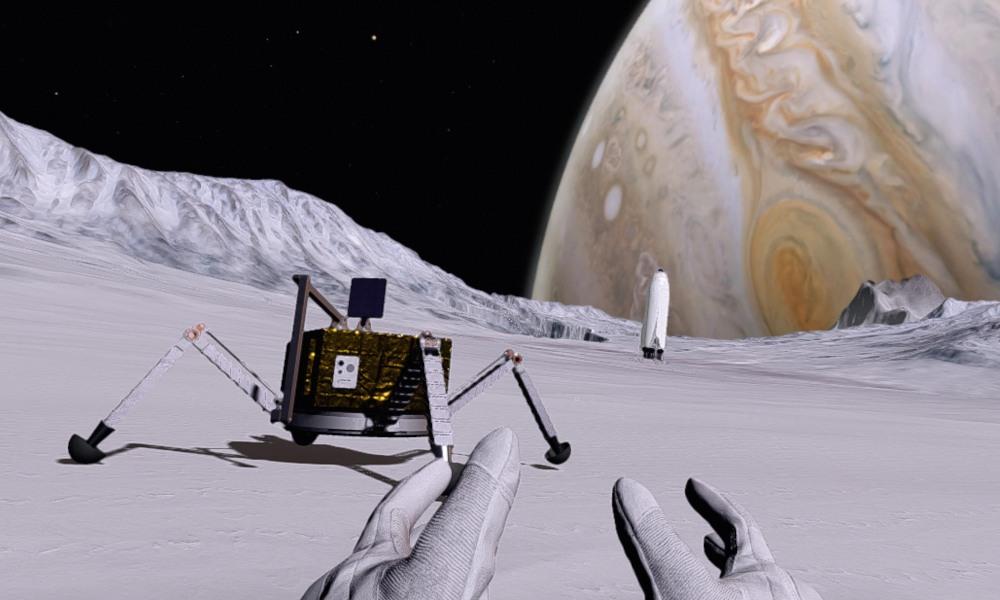A virtual reality system has been created to visit the Moon, Mars or one of Jupiter’s satellites
7/11/23
Researchers from the Universidad Carlos III de Madrid (UC3M) have developed a virtual reality application to recreate a visit to a base on the Moon, Mars or Europa, Jupiter's satellite. This University educational project has been carried out in collaboration with the Geosciences Institute (IGEO, in its Spanish acronym), the Spanish Planetology and Astrobiology Network (REDESPA, in its Spanish acronym) and the Spanish Foundation for Science and Technology (FECYT, in its Spanish acronym) of the Spanish Ministry of Science and Innovation.

Still from one of the virtual reality simulations of a scientific mission to Europa, one of Jupiter's moons.
The NESTOR VR project, as it is called, arises from the aim to increase the scientific interest of students in schools and institutes throughout Spain by first-person exploration of Solar System scenarios through innovative teaching methods, such as virtual reality (VR). "It replicates an immersive experience where it is possible to move around the surface of the red planet or some satellites, as if we were astronauts exploring our solar system. During our tour, we can learn about the science that helps us to better understand these places and the technology that allows us to visit them," explains the head of the project, Manuel Sanjurjo Rivo, a lecturer from UC3M's Aerospace Engineering Department.
The research staff who have developed this application, from institutions such as UC3M, the European Space Agency or IGEO (CSIC-UCM), paid special attention so that the developed virtual reality was reliable. "We strive to look for available information on the terrain, the soil texture or the colours that we could see if we were actually in the real scenario. In addition to the effort in implementing the scenarios, the need to check and consult the details we included meant that the development time was longer than initially stipulated," says virtual reality applications developer, Christian Pérez Nicolás, who has a Master's degree in Space Engineering from UC3M.
Virtual reality glasses and controllers are required to use these simulators, as well as associated software that makes it possible to have a fully interactive experience. It is also possible to view immersive 3D videos using a mobile phone and virtual reality glasses such as Google Cardboard. In addition, the virtual reality experience includes a geoethical perspective on the use of planetary resources in a similar way to how they are used on Earth, according to goals and targets 13, 14 and 15 of the 2030 Agenda for Sustainable Development.
On the project’s website, where the application will be available for all those interested in "travelling" around the Solar System, you can also find videos showing a virtual reality project prior to NESTOR VR that makes it possible to visit the facilities of a moonbase and carry out real lunar soil spectroscopy missions.
In order to develop this system, several tests were carried out with students from several secondary schools in the Community of Madrid at UC3M's Leganés Campus. "We collected direct feedback with these tests so that the application is as attractive as possible to students," says another of the researchers involved in this project, Sara Guerrero Aspizua, a lecturer from the University's Bioengineering Department. All of this has made it possible to develop these simulations which, as the project's website says, could provide the opportunity to learn about planetary science and experience space adventures on a scale never seen before.
More information: NESTOR project website

